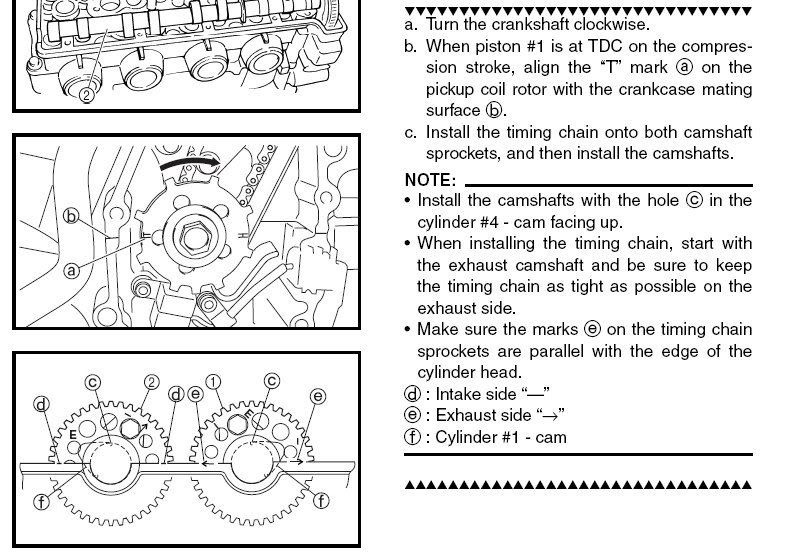markjenn
Well-known member
Hi, I'm getting ready to do my first valve check on my 2005.
I've read most of the tutorials and have done this before on several other bikes, so I'm reasonably familiar with the process and pitfalls. One thing caught my eye in the (very poorly written) service manual. Before timing the cams, it says "when piston #1 is at TDC on the compression stroke, align the T mark...", then it goes through the process of aligning the cams. My question is this: If the cams are out of the engine, how do you know whether you're at TDC after the compression stroke or TDC after the exhaust stroke? Doesn't timing the cams establish the difference? Is there anything on the bottom end of the engine which knows the difference between the two TDC's? (I assume the FJR is a "waste spark" engine that fires the ignition every time a piston is near TDC, not just after the compression stroke.) I see there is a "cylinder identification sensor" in the head so I would assume this is what tells the ECU the difference between the strokes, but this senses something on the cam, right?
My plan is to leave the crank alone and only work on one cam at a time if I have to reshim, but I still was wondering about this.
- Mark
I've read most of the tutorials and have done this before on several other bikes, so I'm reasonably familiar with the process and pitfalls. One thing caught my eye in the (very poorly written) service manual. Before timing the cams, it says "when piston #1 is at TDC on the compression stroke, align the T mark...", then it goes through the process of aligning the cams. My question is this: If the cams are out of the engine, how do you know whether you're at TDC after the compression stroke or TDC after the exhaust stroke? Doesn't timing the cams establish the difference? Is there anything on the bottom end of the engine which knows the difference between the two TDC's? (I assume the FJR is a "waste spark" engine that fires the ignition every time a piston is near TDC, not just after the compression stroke.) I see there is a "cylinder identification sensor" in the head so I would assume this is what tells the ECU the difference between the strokes, but this senses something on the cam, right?
My plan is to leave the crank alone and only work on one cam at a time if I have to reshim, but I still was wondering about this.
- Mark
Last edited by a moderator:




